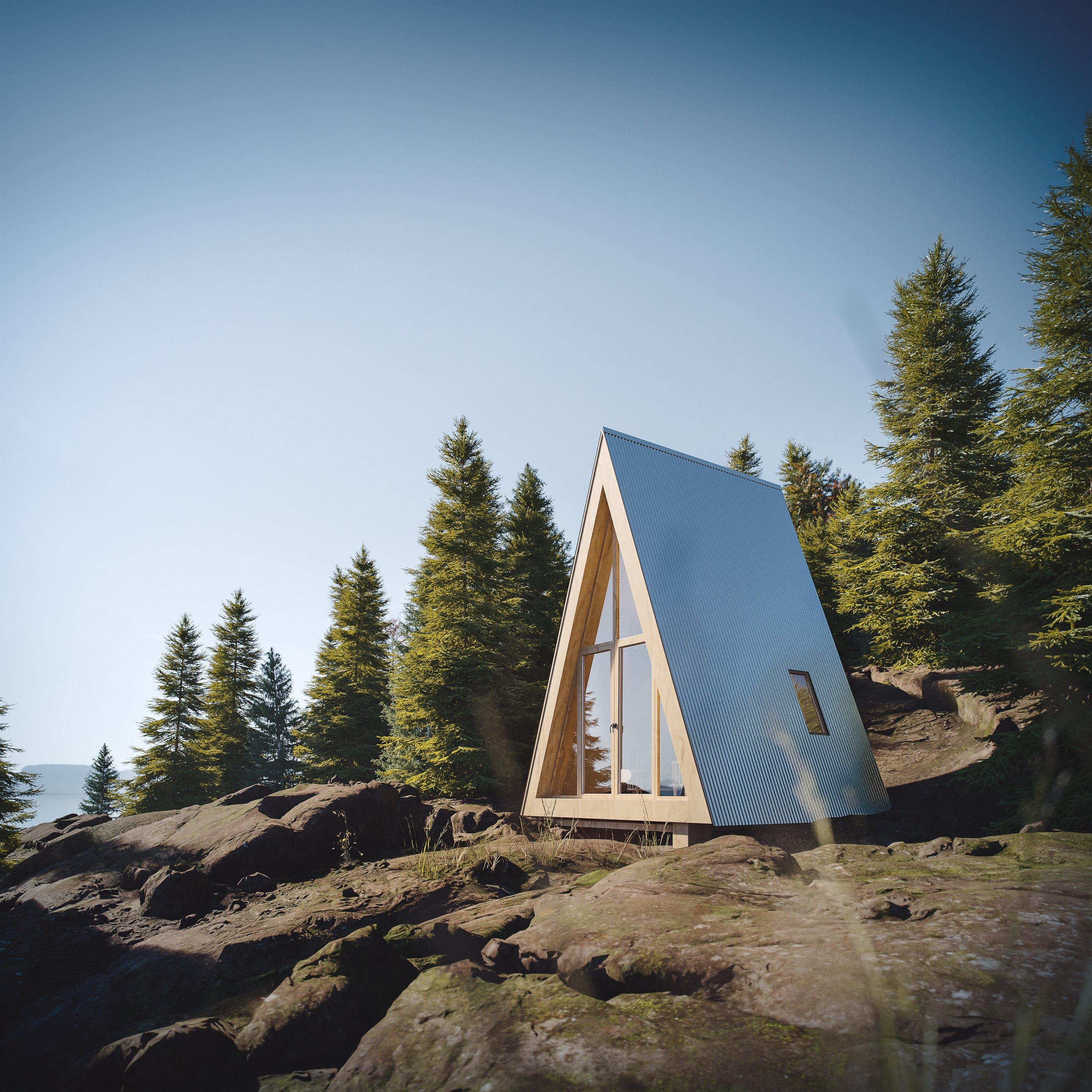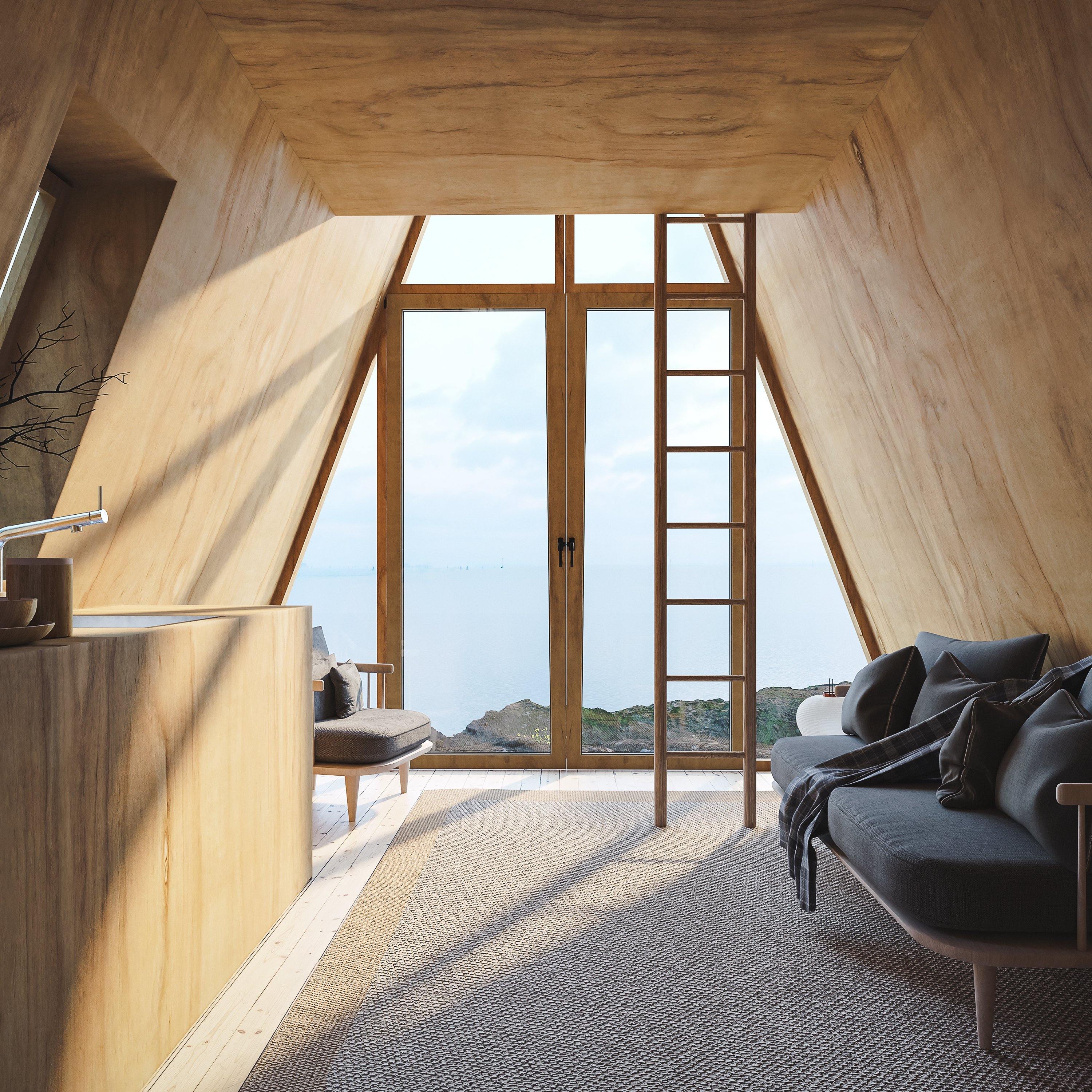The A-frame house, with its distinctive triangular silhouette, stands as an iconic symbol in residential architecture. Its steeply pitched rooflines, descending almost to ground level, not only define its aesthetic but also serve a practical purpose in shedding snow in colder climates. This design seamlessly blends form and function, evoking the charm of Alpine chalets while offering economic construction.
A-frames excel in integrating interior and exterior spaces, creating a fluid living experience. Their open floor plans, punctuated by vast walls of windows, blur the line between indoors and outdoors. Wrap-around decks and covered outdoor areas further enhance this connection to nature, making A-frames ideal for various settings, from wooded retreats to lakeside properties.
The architecture emphasizes simplicity and efficiency. Minimal interior walls contribute to a sense of spaciousness, while the abundance of natural light streaming through large windows creates an airy atmosphere. Whether used as a vacation home or permanent residence, the A-frame's design continues to captivate with its blend of rustic charm and modern sensibility, offering a unique living experience that resonates with those seeking a closer connection to their surroundings.
The history of A-frame houses dates back to the mid-20th century, gaining popularity in post-war America as affordable vacation homes. Their simple construction made them accessible to many, contributing to their widespread appeal. The design's roots, however, can be traced back to ancient civilizations that used similar triangular structures for shelter.
One of the A-frame's most notable features is its energy efficiency. The sloped roof allows for excellent insulation, keeping the interior cool in summer and warm in winter. This characteristic, combined with the potential for passive solar heating through strategically placed windows, makes A-frames an attractive option for environmentally conscious homeowners.
Despite their compact footprint, A-frames often incorporate clever storage solutions. Loft spaces, built-in cabinets, and under-eave storage maximize every inch of available space. This efficiency in design makes A-frames particularly appealing in today's trend towards minimalism and downsized living.
While traditional A-frames are often associated with rustic settings, modern interpretations have brought this classic design into urban and suburban environments. Architects and designers continue to innovate, incorporating contemporary materials and sustainable technologies while maintaining the A-frame's core aesthetic appeal.

 from $999.00
from $999.00
 from $999.00
from $999.00


